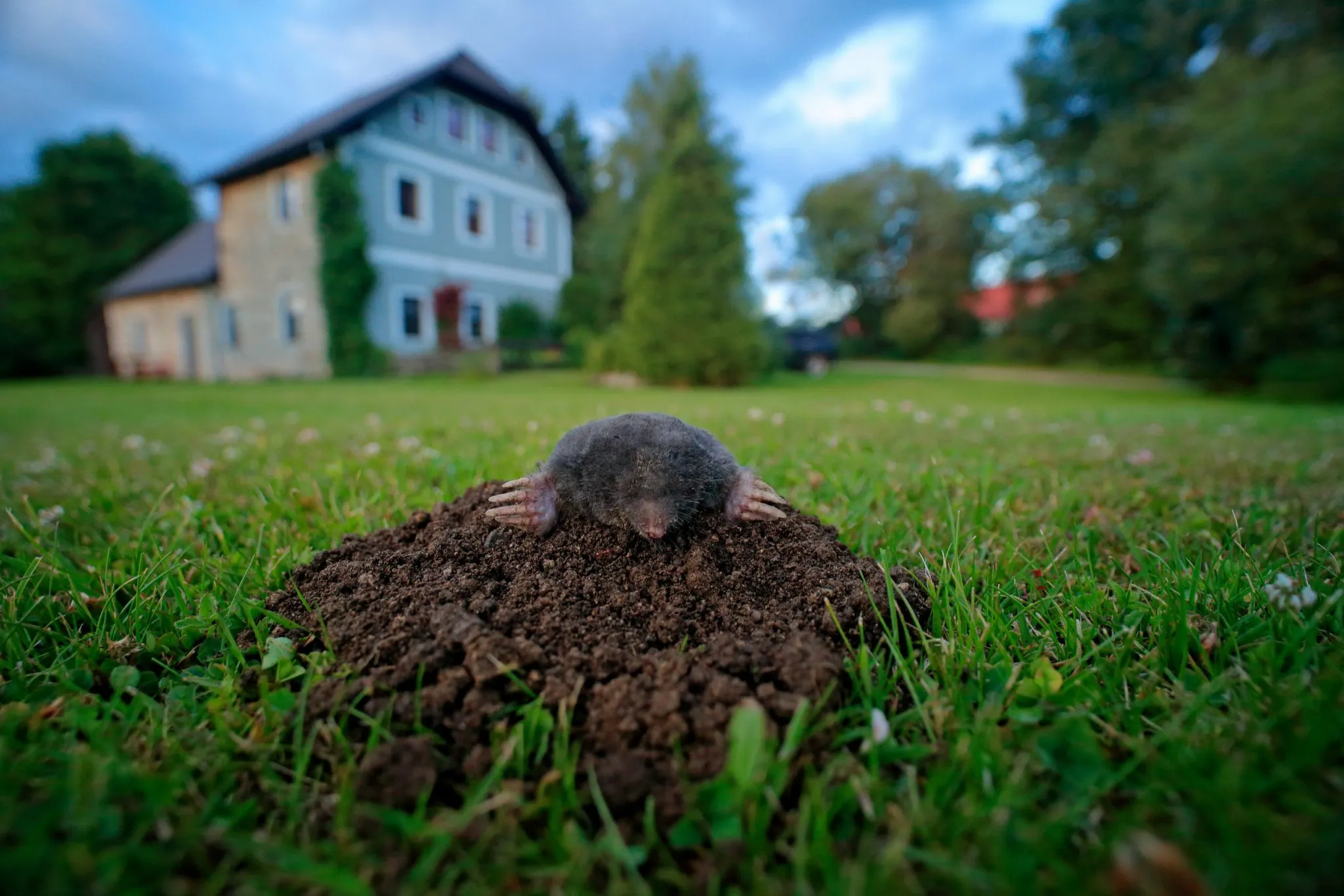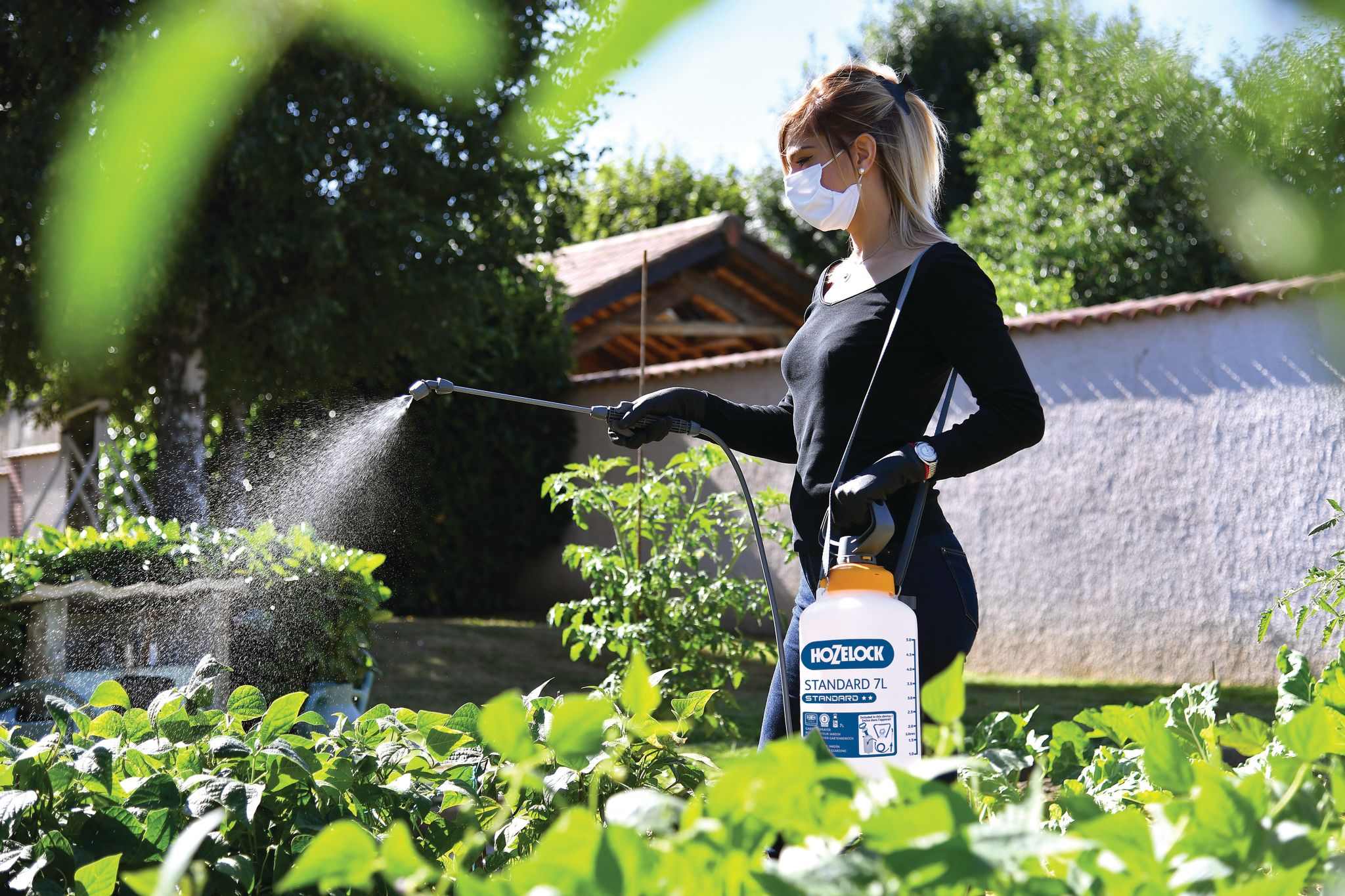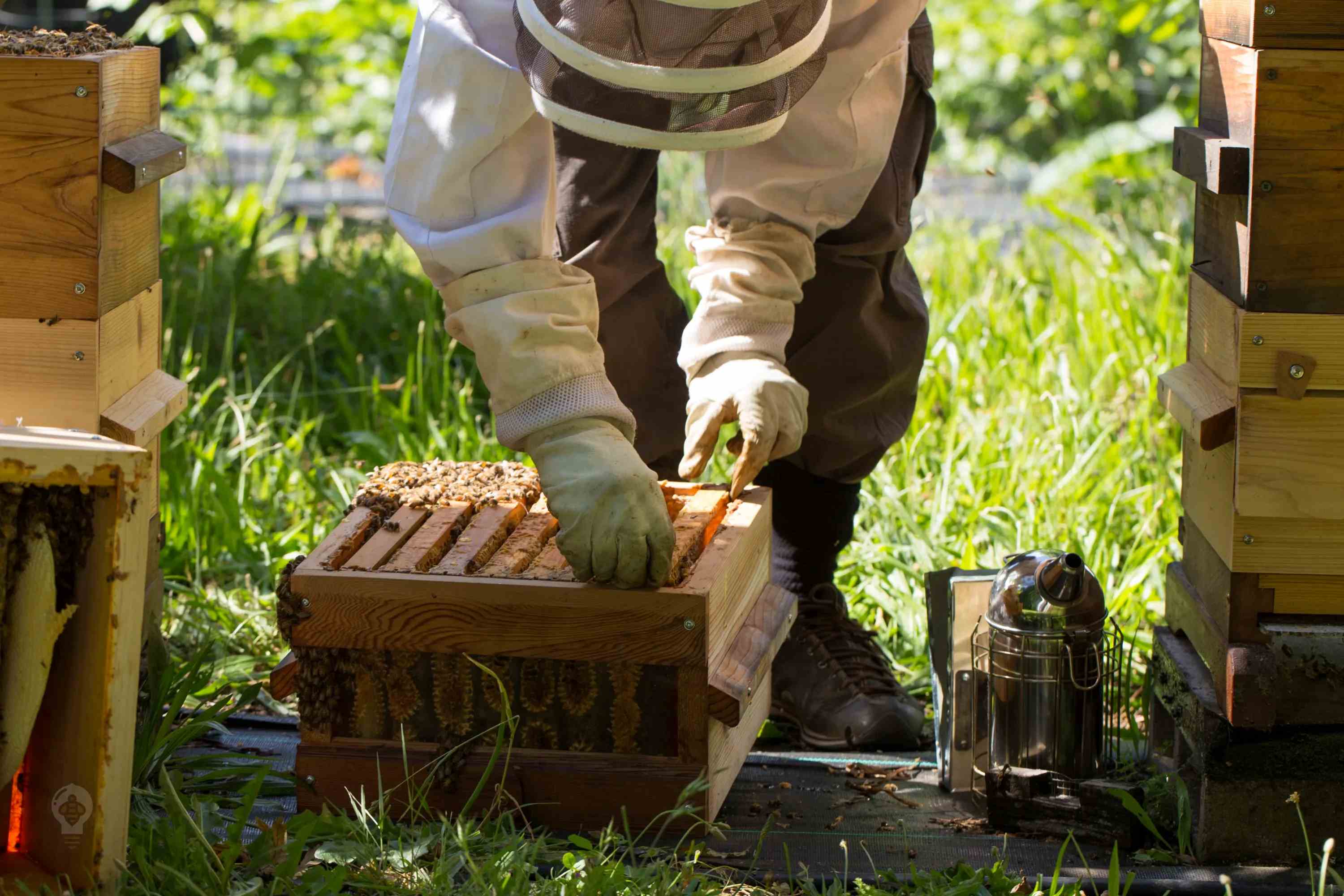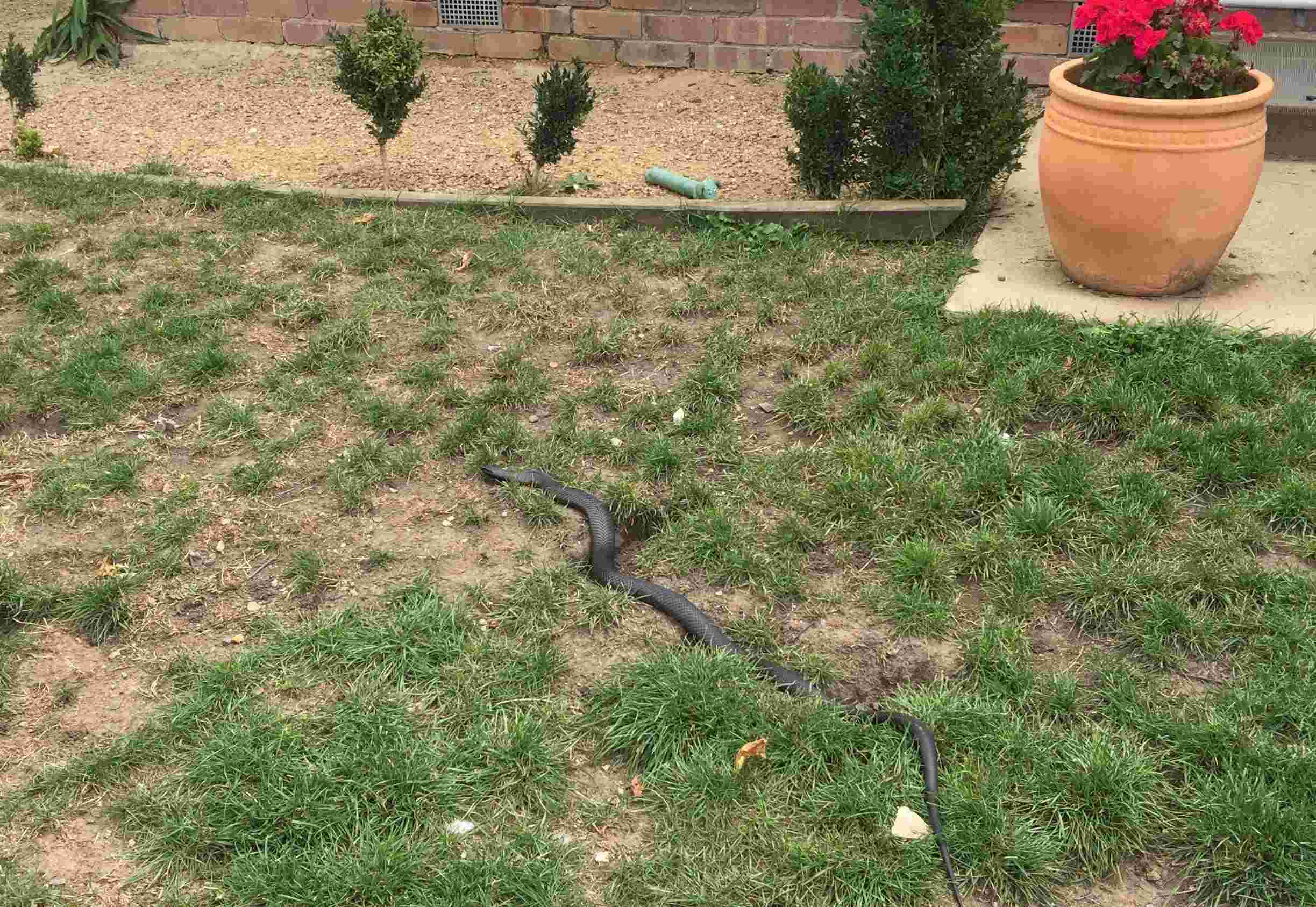Home>Gardening Tips and Tricks>How To Get Rid Of Moles In The Backyard


Gardening Tips and Tricks
How To Get Rid Of Moles In The Backyard
Modified: January 22, 2024
Discover effective methods for problem solving and getting rid of moles in your backyard with our comprehensive guide.
(Many of the links in this article redirect to a specific reviewed product. Your purchase of these products through affiliate links helps to generate commission for Chicagolandgardening.com, at no extra cost. Learn more)
Table of Contents
Introduction
Having a beautiful backyard is a dream for many homeowners. It’s a space where you can relax, enjoy nature, and spend time with loved ones. However, this idyllic setting can quickly be disrupted when moles start making their presence known.
Moles are small, burrowing mammals that can wreak havoc on your backyard. They create unsightly tunnels, tear up plants, and ruin the overall aesthetics of your outdoor space. If left unchecked, mole infestations can quickly grow, causing extensive damage and frustration.
But fear not, there are ways to get rid of moles and restore peace and tranquility to your backyard. In this article, we will explore various methods to rid your yard of these pesky intruders, ranging from natural repellents to physical barriers and traps.
Before diving into the solutions, it’s important to understand the nature of moles and identify when you have a mole infestation. By understanding their behavior and habits, you can implement the most effective strategies for mole control.
So, let’s roll up our sleeves and embark on a journey to reclaim your backyard from these underground menaces. Whether you prefer natural remedies or seeking professional help, we have you covered. Let’s get started!
Understanding Moles in Backyards
Before we can effectively tackle the issue of moles in our backyards, it’s important to have a basic understanding of these creatures. Moles are small, cylindrical mammals with velvety fur and powerful forelimbs. They are specially adapted for underground life, with broad paws that allow them to efficiently tunnel through soil.
Moles are primarily insectivores, feeding on a diet consisting mainly of earthworms, grubs, and other underground insects. Their keen sense of smell and touch help them locate their prey in the dark tunnels they create.
When moles invade our backyards, their tunneling activities can cause significant damage. They dig shallow surface tunnels that result in raised ridges and mounds of displaced soil. These unsightly molehills can ruin the appearance of a well-groomed lawn and damage the root systems of plants.
One common misconception is that moles consume plant roots. While they may accidentally damage some plant roots during their tunneling, moles are primarily interested in the insects that reside in the soil. Understanding their feeding habits helps us determine the most effective eradication methods.
It’s important to note that moles are solitary animals, with each individual claiming a territory of up to several acres. This means that having one mole in your backyard may not indicate a major infestation. However, as moles reproduce, their populations can quickly multiply, leading to an escalating problem.
Now that we have a better understanding of moles and their behaviors, we can move on to identifying whether our backyards are truly infested and begin exploring the various techniques for getting rid of these unwanted visitors.
Identifying Mole Infestations
In order to effectively combat mole infestations in your backyard, it’s crucial to accurately identify the presence of these underground creatures. Here are a few signs that can help you determine if moles have taken up residence in your outdoor space:
- Molehills and Surface Tunnels: One of the most obvious signs of mole activity is the appearance of molehills, small mounds of soil that are pushed up to the surface by the moles. These molehills are typically shaped like a volcano and can be found scattered throughout your lawn or garden. Additionally, you may notice raised ridges or surface tunnels, which are created as moles excavate their underground networks.
- Damaged Plant Roots: While moles primarily feed on insects, their tunneling activities can inadvertently damage the root systems of plants, leading to wilting or stunted growth. Look for signs of dying or uprooted plants, particularly in areas with a high concentration of mole activity.
- Distinctive Mole Runways: As moles travel through their tunnels, they create distinctive pathways known as runways. These runways are often located just below the surface and can be identified by their compacted appearance and absence of vegetation. If you gently press down on a runway with your foot, it will give way slightly due to the tunnel below.
- Surface Damage: Moles have a tendency to dislodge surface features such as stepping stones, lawn ornaments, or edging materials as they burrow beneath the ground. Keep an eye out for any signs of disturbance on the surface of your yard.
If you observe any of these signs, it’s likely that you have a mole infestation in your backyard. However, it’s important to note that other creatures, such as voles or gophers, can cause similar damage. If you are unsure about the exact culprit, consult with a professional pest control service for an accurate identification.
Now that we know how to identify mole infestations, let’s explore some natural and homemade methods to deter moles and reclaim our backyard from these unwanted guests.
Natural Methods to Repel Moles
If you prefer a more environmentally-friendly approach to dealing with mole infestations, there are several natural methods you can try. While these methods may not completely eliminate the problem, they can help deter moles from causing further damage to your backyard. Here are some effective natural repellents:
- Castor Oil: Castor oil is a natural repellent that can be effective in driving away moles. The strong scent and taste of castor oil make the soil and plants less appealing to moles. Mix a small amount of castor oil with water in a spray bottle and generously spray it on areas affected by mole activity. Reapply after rainfall or irrigation.
- Vibrating Stakes: Another natural deterrent is the use of vibrating stakes. These stakes emit vibrations that simulate the movement of larger predators, making moles feel threatened and encouraging them to leave your yard. Insert these stakes into the ground near molehills or in areas with high mole activity.
- Natural Predators: Encouraging natural predators of moles, such as owls, snakes, or domesticated pets like dogs or cats, can help keep mole populations in check. Creating a conducive environment for these predators, such as providing shelter or attracting their food sources, can be an effective long-term solution.
- Planting Repellent Plants: Certain plants, such as daffodils, marigolds, or alliums, are known to have repelling properties against moles. Plant them strategically around your yard or in areas prone to mole activity to create a naturally deterrent barrier.
- Repellent Granules: Commercially available repellent granules can be sprinkled around your yard to create an unpleasant scent and taste for moles. Look for products that contain ingredients such as garlic, chili powder, or predator urine.
Remember, natural repellents may require repeated application and may not provide immediate results. However, with consistent use, they can discourage moles from making your backyard their home.
While natural methods can be effective to some extent, sometimes stronger measures are necessary. In the next section, we will explore homemade mole repellents that can provide a more robust defense against these persistent pests.
Homemade Mole Repellents
If you prefer a more hands-on approach to dealing with moles in your backyard, you can create your own homemade mole repellents using common household ingredients. These DIY remedies can be just as effective as commercial products, without the concern of chemicals or harmful substances. Here are a few homemade mole repellents to consider:
- Garlic and Chili Pepper Spray: Moles are sensitive to strong smells, making a garlic and chili pepper spray an effective repellent. Blend several cloves of garlic and a handful of chili peppers with water, and strain the mixture into a spray bottle. Spray the solution directly onto the molehills and affected areas in your yard to deter moles.
- Castor Oil and Dish Soap Mixture: Combine a cup of castor oil with a tablespoon of liquid dish soap and mix well. Dilute this mixture with water and use a garden sprayer to apply it to the affected areas. The strong scent of the castor oil will deter moles, while the dish soap helps the solution adhere to the soil.
- Mothballs: Mothballs are known to have a strong odor that moles dislike. Place mothballs around molehills and tunnels, ensuring they are out of the reach of children and pets. The scent will discourage moles from staying in your yard.
- Pet Hair: Collect pet hair from grooming sessions and scatter it around your yard, paying particular attention to areas with high mole activity. The scent of animal fur can be a natural deterrent for moles.
- Homemade Vibrating Stakes: Create your own vibrating stakes by attaching wind chimes or pieces of tin foil to wooden stakes. The sound and vibrations created by the wind will mimic the presence of larger animals, scaring away moles.
Remember to regularly reapply these homemade repellents after rain or irrigation to maintain their effectiveness. While homemade mole repellents can be effective, it’s important to note that their success may vary depending on the severity of the infestation and the persistence of the moles in your area.
If natural and homemade methods do not provide the desired results, you may need to consider implementing physical barriers to prevent moles from accessing your yard. This will be discussed in the next section.
Implementing Physical Barriers
If you have tried natural and homemade repellents without success, implementing physical barriers can be an effective solution to keep moles out of your yard. These barriers create obstacles that prevent moles from tunneling and accessing your outdoor space. Here are some physical barriers to consider:
- Hardware Cloth: Installing hardware cloth beneath your lawn or garden can create a barrier that moles cannot penetrate. Dig a trench around the perimeter of the area you want to protect and bury the hardware cloth, ensuring that it extends several inches above ground level. This will prevent moles from burrowing into your yard.
- Buried Fencing: burying a metal or plastic barrier can effectively block moles from entering your yard. Dig a trench around the perimeter of your yard and bury the fencing at least 2 feet deep. Ensure that the barrier extends above the soil line to prevent moles from burrowing underneath it.
- Underground Barriers: Creating an underground barrier with materials such as gravel, rocks, or sharp objects can make it difficult for moles to tunnel through. Place these materials in the mole’s active tunnels or create a barrier around sensitive areas to discourage their movements.
- Elevated Raised Beds: Building raised garden beds can be an effective way to protect your plants from mole damage. By elevating the planting area, moles are less likely to tunnel into the protected space. Use materials such as stone or concrete blocks to create the raised beds and ensure that there are no gaps or openings where moles can access.
- Predator Decoys: Placing predator decoys, such as statues or cutouts of animals like owls or hawks in your yard, can create an illusion of threat and deter moles. Move the decoys occasionally to maintain their effectiveness.
Implementing physical barriers can be a more long-term solution to prevent moles from entering and damaging your yard. However, it’s important to ensure that your barriers are properly installed and well-maintained to be effective.
If natural repellents, homemade remedies, and physical barriers have not yielded the desired results, it may be time to consider using traps to control the mole population. The next section will cover different types of traps and how to use them effectively.
Using Traps for Mole Control
If you’re dealing with a persistent mole problem in your backyard, using traps can be an effective method to control their population. Traps allow you to capture and remove moles from your yard, minimizing further damage. Here are some traps commonly used for mole control:
- Spring-Loaded Traps: Spring-loaded traps are one of the most common and effective options for trapping moles. These traps have sharp, scissor-like jaws that snap shut when triggered by the mole’s movement. They should be placed in active tunnels, identified by the raised ridges or runways. Follow the manufacturer’s instructions for proper placement and ensure that the trap is secure to prevent accidental triggering.
- Scissor Traps: Scissor traps are similar to spring-loaded traps but feature two scissor-like halve that meet in the middle when activated. Place the scissor trap in an active tunnel and make sure it is set properly. Check the traps regularly and remove any trapped moles.
- Pitfall Traps: Pitfall traps are simple and effective for capturing moles. Dig a hole and place a container, such as a bucket or a jar, into the ground so that its lip is level with the surface. Cover the hole with a board or turf, leaving only a small opening for the mole to fall into the container. Check the trap regularly and release captured moles far away from your property.
- Live Traps: Live traps allow you to capture moles without causing them harm. These traps typically consist of a cage or box with a triggering mechanism that closes the entrance once the mole enters. Bait the trap with an appealing food source such as earthworms or grubs. Check the trap frequently and release captured moles in an appropriate location away from your property.
- Humane Mole Tubes: Humane mole tubes are a more passive approach to mole control. These tubes are designed to allow moles to enter but make it difficult for them to escape. Install the tube in a mole runway and regularly check for captured moles. Release them far away from your yard.
When using traps, it’s important to follow local regulations and laws regarding trapping and animal disposal. Additionally, handle traps with care to avoid injury, and always read and follow the manufacturer’s instructions for proper use.
If trapping moles on your own seems daunting, or if you’re dealing with a severe infestation, it may be wise to seek professional help. They have the experience and knowledge to effectively address your mole problem and ensure the long-term health of your yard.
Now that we’ve explored different methods for mole control, it’s time to wrap up and summarize the key points.
Seeking Professional Help
When dealing with a stubborn or extensive mole infestation in your backyard, seeking professional help may be the best course of action. Professional pest control companies have the expertise, tools, and knowledge to effectively address mole problems and tailor a solution to fit your specific situation. Here are some reasons why seeking professional help can be beneficial:
- Experience and Expertise: Pest control professionals have extensive knowledge and experience in dealing with mole infestations. They can accurately assess the severity of the problem, identify mole activity, and implement targeted strategies to control and remove moles from your yard.
- Evaluation of the Yard: Professional pest control technicians can thoroughly evaluate your yard to identify the cause of the mole infestation and determine any underlying factors that are contributing to the problem. This evaluation helps in developing a comprehensive treatment plan to address the issue effectively.
- Proper Use of Control Methods: Professionals are trained in the safe and effective use of control methods, including traps, repellents, and physical barriers. They can choose the most suitable and humane methods for your specific situation, ensuring the best possible outcome without causing harm to the environment or other wildlife.
- Long-Term Prevention: Pest control experts can provide valuable advice and recommendations on preventing future mole infestations. They can suggest landscaping techniques, soil amendments, and other preventive measures to discourage moles from returning to your yard.
- Guaranteed Results: Many professional pest control companies offer guarantees or warranties on their services. This means that if the mole problem persists after treatment, they will return to resolve the issue at no additional cost. This provides peace of mind and reassurance that the problem will be effectively addressed.
Remember to choose a reputable and licensed pest control company that specializes in dealing with mole infestations. Seek recommendations from friends or neighbors, read reviews, and inquire about their approach to mole control.
By seeking professional help, you can save time, effort, and frustration in dealing with mole infestations. They have the necessary resources and knowledge to tackle the problem efficiently, allowing you to enjoy your backyard without the nuisance of moles.
With the information provided in this article, you now have a range of options to tackle the mole problem in your backyard. Whether you choose natural methods, homemade repellents, physical barriers, traps, or professional assistance, taking action is the key to regaining control over your outdoor space. Remember to choose the method that aligns with your values, budget, and the severity of the infestation.
Conclusion
Mole infestations in our backyards can quickly become a frustrating and unsightly problem. However, by understanding the nature of moles, identifying their presence, and implementing appropriate control methods, we can effectively regain control of our outdoor spaces.
Throughout this article, we have explored various methods to repel moles naturally, create homemade repellents, implement physical barriers, use traps, and seek professional help. Each method has its own advantages and considerations, allowing you to choose the approach that best suits your preferences and the severity of the infestation.
From natural repellents such as castor oil and vibrating stakes to homemade mixtures like garlic and chili pepper spray, there are numerous ways to deter moles using everyday household ingredients. Physical barriers, such as hardware cloth and elevated raised beds, create physical barriers that moles cannot easily penetrate. Traps, including spring-loaded traps and live traps, allow for the capture and removal of moles from the yard. Finally, professional help offers expertise, experience, and long-term prevention strategies for more severe or persistent mole infestations.
Remember to approach mole control with patience and persistence, as it may take time to see results. Regular monitoring and reapplication of repellents or repositioning of traps may be necessary.
By taking action and implementing the appropriate methods, we can reclaim our backyards from mole invasions and restore peace and beauty to our outdoor spaces. Whether you choose to tackle the problem on your own or seek professional help, the key is to address the issue promptly and effectively.
Now armed with the knowledge and strategies provided in this article, it’s time to bid farewell to mole infestations and create a backyard oasis once again.









